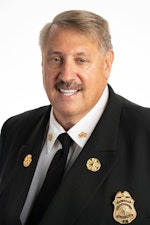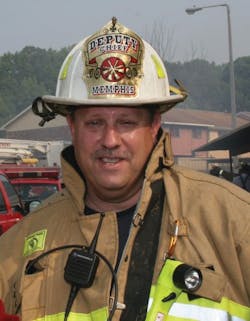Did you ever wonder how something gets it names? What about an eggplant? It doesn’t look like an egg. Actually, eggplants came from Asia and were popular in the Near East long before they reached Europe. Then, in the Middle Ages, traders brought a certain kind of eggplant to Europe. That rare white variety was shaped like a hen’s egg, so the vegetable was called eggplant. The name stuck, even when the familiar purple eggplant reached Europe years later.
Where did the word “hamburger” come from? It does not look like ham and where did “burger” come from? In the mid-19th century, people in the port city of Hamburg, Germany, savored a class of crushed beef called Hamburg steak. When millions of Germans immigrated to America, they brought the food and its name along with them. Thus, when you stop at your favorite fast-food joint, you order a hamburger.
Derivation of term
Several years ago, the term “community paramedic” emerged. Where did the term come from? I suspect it is an off-shoot of the word “community nurse.” Community nurses are predominantly those nurses who outreach to patients outside a medical setting with the goal of prevention or promoting health among people. The natural progression for paramedics who perform this type of service was to call them “community paramedics.”
The website www.communityparamedic.org speaks strictly about paramedics working in rural or remote areas where access to healthcare is limited and one can assume community nurses are not available. The website describes paramedics in remote areas doing procedures that are outside the normal scope of a paramedic.
But the term “community paramedic” is now being applied to not only remote areas, but any area you can think of – rural, suburban and urban. All kinds of hybrid “community paramedic” programs are cropping up, with many differences among them. Some of these communities are calling them “community paramedics.” Even large private ambulance organizations have developed a program called “community paramedic” they market in communities where fire-based EMS systems already exist and other communities where they have contracted for 9-1-1 services.
So now we have responders who are called “community paramedics” performing all kinds of services besides running 9-1-1 calls from a piece of fire apparatus and/or an ambulance. They are doing so in various-size communities – in big cities, the suburbs and rural parts of the country where the closest hospital may be more than 50 miles away. Some respond to low-acuity calls with a nurse practitioner or physician assistant and perform treat-and-release of patients who do not have to go to a hospital. Other paramedics do after-hospital care in partnership with a hospital system; others work with doctor groups to manage the out-of-hospital care of a specific segment of patients, such as those with chronic heart failure or asthma. Still others are conducting community wellness checks for the purpose of preventing diseases or catching them early before they can cause problems.
So what is a “community paramedic?” Who knows? The definition seems to differ from community to community and the functions they perform also seem to differ.
This does not surprise me. Back in the late 1960s and early 1970s, there were six cities where physicians were training firefighters to be paramedics. There were no textbooks for paramedics. There were no standards. There were no state laws governing what a paramedic could and could not do. Physicians were teaching firefighters to do advanced procedures in the field, including starting IVs, administering medications, reading EKGs and doing advanced airway procedures.
As time evolved, however, Congress passed the Emergency Medical Services Systems (EMSS) Act in 1973 and created funding for EMS systems. As a result, the federal government took the lead in developing some standards with respect to EMS, but states also enacted legislation creating standards for paramedics to be licensed.
I am sure, some 40 years ago, somebody asked the same question – what is a paramedic? Nobody could really say, since they were being taught different things and nobody was following a structured curriculum, and states lacked legislation defining their scope of practice or licensing credentials.
Now, some 40 years later, we find ourselves trying to define a community paramedic. We still don’t know! There is no curriculum for advanced skills or even defining what those advanced skills are. I know of no state that has attempted to license a community paramedic.
However, as we move in an evolutionary fashion away from the almost 50-year-old model of taking everyone who calls for an ambulance to an emergency room and start delivering other types of non-scheduled care, I suspect a whole sub-category of EMS will emerge and we will see new curriculum, standards and licensing for community paramedics. Hopefully, if the federal government begins to delve into this area, it will also see the value of reimbursing EMS systems for non-transport to the emergency service.
For more news and training on EMS, visit http://EMSWorld.com/.
GARY LUDWIG, a Firehouse® contributing editor, has 35 years of fire, rescue and EMS experience. He currently serves as a deputy fire chief for the Memphis, TN, Fire Department. Ludwig is also chair of the EMS Section for the International Association of Fire Chiefs. He can be reached through his website at garyludwig.com.

Gary Ludwig
GARY LUDWIG has served in three fire departments over his career: St. Louis, Memphis, and Champaign, IL. His fire, EMS and rescue career spanned a total of 46 years, and he has been a paramedic for over 44 years. Ludwig served as president of the International Association of Fire Chiefs in 2019-20. He has a Master’s degree in Business and Management, has written over 500 articles for professional fire and EMS publications and is the author of seven books.
Connect with Gary
Email: [email protected]
Facebook: Gary Ludwig
Twitter: @ChiefGaryLudwig
Website: garyludwig.com






